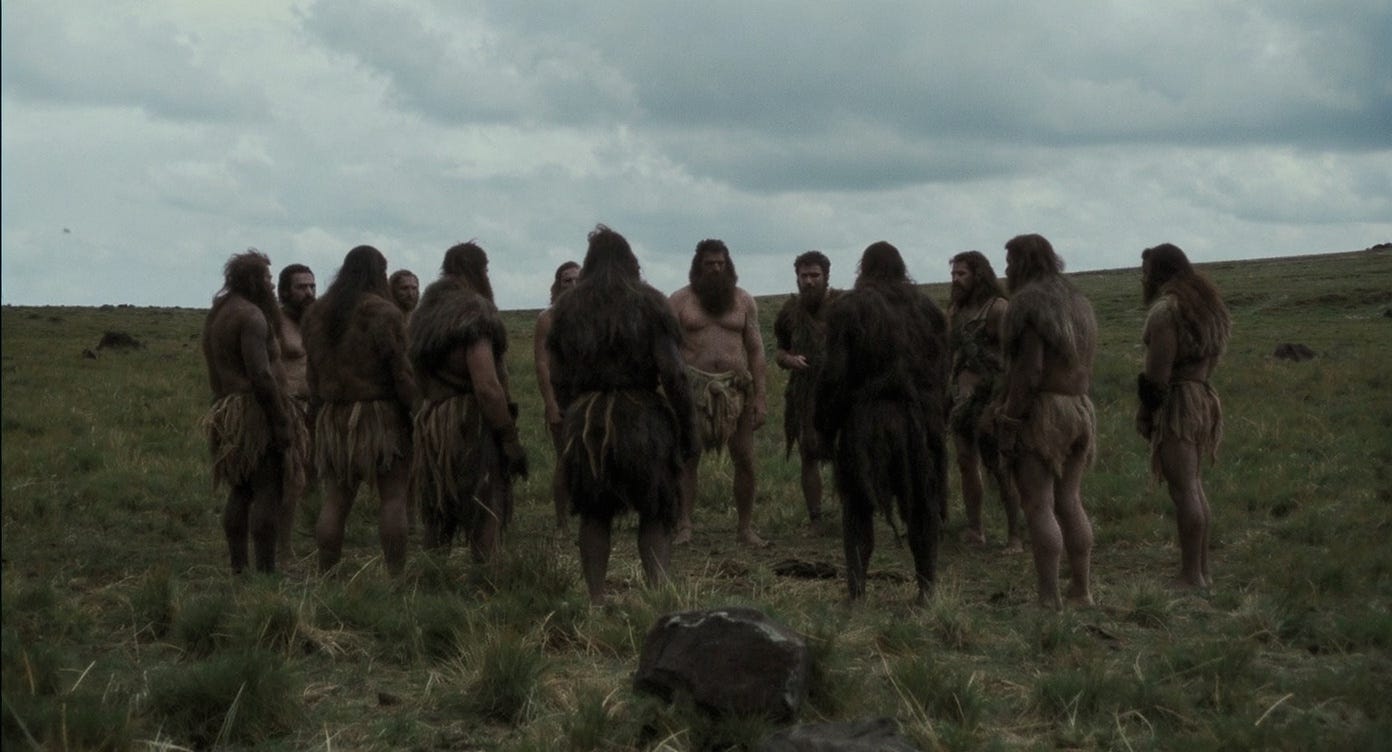Nuance vs. Tribalism, Empowering Creators vs. Refactoring Process, & Final Mile Leadership
This edition explores two modern day tensions worthy of debate, as well as a plea to leaders traversing the final mile of any project or company.
Edition #35 of Implications.
This edition explores forecasts and implications around: (1) new technology for creativity without compromising control, (2) the tensions between nuance and tribalism, (3) the final mile measure of a leader, and (4) some surprises at the end, as always.
If you’re new to IMPLICATIONS, here’s the rundown on what to expect. This ~monthly analysis is written for founders + investors I work with, colleagues, and subscribers. I aim for quality, density, and provocation rather than frequency and trendiness. We don’t cover news; we explore the implications of what’s happening (and some essential yet uncommon insights for makers). My goal is to ignite discussion and socialize edges that may someday become the center.
If you missed the big annual analysis or more recent editions of Implications, check out recent analysis and archives here. A few recommendations based on reader engagement:
As we reclaim more time, we’ll value it even more. When minutes become more valuable, what cultural practices and norms might change?
In an increasingly automated world managed by technology that optimizes for efficiency, the unsaid reasons we do what we do will become critical insights for product leaders.
We’re just years away from being able to share our memory (in the form of all of our interactions with AI) with colleagues, friends, and family. What is it like to access parts of the accumulated knowledge and experiences of others just as you recall your own lessons learned? What are the implications?
Alright, let’s dive into Edition #35 of Implications…
Empowering Creators vs. Refactoring a Process
New technology for creatives is notoriously misunderstood, if not feared, at first. From products like Photoshop to digital cameras and green screens, new methods are typically shunned before they are celebrated. Why? Because the process behind art is part of the art. The process influences how art makes us feel, and the best process innovations unlock new forms of art. For instance, the emergence of indie film was largely made economically feasible by digital cameras. The goal of new technology shouldn’t be to improve a process but rather to empower creators to do new things.
I’ve spent a lot of my career building platforms and tools to help creators make ideas happen. While people get excited about new technology, a common mistake is focusing on what the tech can make, rather than how it gives creators more control over what they make. The breakthrough happens when new tech empowers rather than replaces. The technology that actually extends creative possibilities (rather than simply refactoring work) is technology that helps creators take more creative risk to achieve what’s in their imaginations.
As we enter the AI era, I am seeing a lot of tools attempt to take away creative control rather than enable it. Many of these tools, albeit still in their infancy, are only able to satisfy those who don’t know exactly what they want, as opposed to the creators who do. The latter are always let down by inconsistencies, a lack of control over detail, and the frustrating game of adjusting one thing that inadvertently changes another, like a game of whack-a-mole. These new tools are attempting to replace process as opposed to enabling new (and more) possibilities. Asking a creator to change their workflow for the purpose of accommodating a new technology (to save costs, to be an early adopter, or otherwise) is like asking someone to do their best work with one hand behind their back. Tech for tech's sake is a fool's errand.
The implications? In the age of AI, I am increasingly convinced that human creativity is the craft of making something specific — something you see in your mind’s eye — and creating with more intention than ever before. Prompts will not suffice. For makers of creative tools and stewards of creative process, the real opportunity is to make tools that are ultimately in service of the story - of the creator’s vision - as opposed to simply refactoring or changing a process because you can. Your job, as an outfitter of creators, is to empower people to make new ideas happen. You’re enabling creators, not changing them. New technology should be used to solve creative problems in better ways, explore more surface area of possibility to find better solutions, and achieve more specificity. Too many new tools ask artists to compromise the details of their vision in return for having the technology do part of their job. True artists don’t want that deal. Creative risk is the source of unforgettable stories and breakthrough projects that move the world forward, and technology should help this happen. Every tool must be used in pursuit of whatever’s in the mind’s eye. Otherwise, it is constraining the story.
How Nuance is Lost in Tribalism
I was recently sitting down with a Palestinian friend and early-stage founder I deeply respect. His family were refugees and, through a twist of fate many years ago, he was the recipient of a fully subsidized scholarship from a European organization that brought together a cohort of Israeli and Palestinian children to study together at boarding school. While his extended family initially objected to him “being indoctrinated by the west,” his parents ultimately supported him accepting the scholarship, if only out of concern for his safety at home. As a cohort traversing their teenage years together, they all became friends, dated each other, attended each other’s life events, and emerged as young professionals with an enlightened perspective on their regional conflict and cultural differences.
I was interested in what his cohort of friends make of the current middle east chaos and information wars at work. It seems the consensus is a desperate hope for peace and a deep disdain for governmental leaders on both sides. But most of all, his cohort of friends have a deep appreciation for something that everyone else seems to miss these days: nuance. Nuance is the collection of caveats and footnotes beyond the headlines that one can only fully understand by being on the ground and adjacent to those suffering loss and hopelessness. Why have we lost nuance? Because, in times of danger and strife, humanity defaults to tribalism.
In the early days of humanity, tribes were our only way to be safe. What was once a literal group of people dedicated to each other’s survival — keeping people fed and allowing some to rest while others patrolled — is now a metaphorical group of people that are committed to reinforcing the world view of each other. Effective tribalism requires loyalty to the tribe and practicing and reinforcing whatever the tribe believes, often dictated by its leaders. Tribes must keep things simple to keep people together: you’re either with us or against us. And there is no room for nuance in tribalism. The lowest common denominator of belief systems is a clear understanding of what’s right and wrong. Nuance is a lethal crack to tribalism, because it allows doubt to creep in.
When facing the danger of a lion lurking, there is no safer place to stand than the middle of a tribe, surrounded by those committed to protecting you. The author Sebastian Junger wrote a great book making the case that, in the modern day, humanity still defaults to seeking safety in tribes. We are all biologically programmed to seek being part of a group and to feel safer in the middle of that group. Standing in isolation was dangerous in the early days of humanity – and remains dangerous today. When you’re not a part of the right or the left, who are you? What do you even stand for? Attempting to understand nuance and rejecting a tribal “right or wrong” stance requires bravery these days.
We’re getting more tribal these days and, as a consequence, losing our search and appreciation for nuance. To make matters worse, technology is making it harder to access nuance. As we increasingly rely on social media for our news, powerful algorithms tune out nuance because it doesn’t engage us. We favor sensational and declarative headlines rather than fair, nuanced takes on a situation, and the algorithms optimize accordingly. The business models of journalism simply do not support nuanced reporting. The primitive part of our brains fears it. And the algorithms altogether hide it. As a result, tribalism is further fortified on all sides of an issue.
The True Measure of a Leader is Revealed in the Final Mile
Lately, as talent wars in the tech world lead to acquisitions that disproportionately favor the founders, there has been much discussion about a founder’s responsibility to their team in an acquisition. In my experience, founders know, in their gut, what the right thing to do is. Ultimately you should do what you want to remember doing 10 years later when you look every team member in the eye (or try to hire them again!). The dirty little secret about leadership is that a large amount of everyday leadership is performative. When things are going as planned, many leaders are capable of all the best practices for team building, strengthening a culture, and driving performance.
But I’ve seen enough leaders behind closed doors during perilous or highly consequential moments to realize how much of a leader’s impact comes down to decisions made and actions taken in “the final mile.” Whether it is the final period before a product’s launch, the lead up to an IPO or acquisition, or the final period before a company is shut down…nothing reveals a leader’s true character and capabilities more than this final mile. Most leaders try to do the right thing on a daily basis to ultimately serve customers and their teams. But something happens in the final mile that truly tests leaders’ resolve and core values. When quick, key decisions can shift money around quickly, when the incentives of the leader and their team start to diverge, when the spotlight shifts, something changes. For instance, many leaders overestimate their own importance and undervalue their team in the final mile when they negotiate deal structure and determine salaries and titles. No matter what you hear, the truth is that vesting can be accelerated, cap charts can be tweaked, and founders are often empowered to do the right thing for their teams (and ultimately for their own pride and reputation in the long term)…if they make it a priority. How a founder operates at such moments reveals so much. This is the mile of the journey by which leaders are truly measured.
Ideas, Missives & Mentions
Finally, here’s a set of ideas and worthwhile mentions (and stuff I want to keep out of web-scraper reach) intended for those I work with (free for founders in my portfolio, and colleagues…ping me!) and a smaller group of subscribers. **We’ll cover a few things that caught my eye and have stayed on my mind as an investor, technologist, and product leader (including how stories are the building blocks of culture, the bundling cycle of media, and data provocations around the economy, how we use LLMs, and and a few other curiosities). Subscriptions go toward organizations I support including COOP Careers and the Museum of Modern Art. Thanks again for following along, and to those who have reached out with ideas and feedback.
Keep reading with a 7-day free trial
Subscribe to Implications, by Scott Belsky to keep reading this post and get 7 days of free access to the full post archives.




